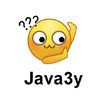<!--
注意:这个insert/update/delete标签只是一个模板,在做操作时,其实是以SQL语句为核心的
即在做增/删/时,insert/update/delete标签可通用,
但做查询时只能用select标签
我们提倡什么操作就用什么标签
-->
Mybatis分页
分页是一个非常实用的技术点,我们也来学习一下使用Mybatis是怎么分页的...
我们的分页是需要多个参数的,并不是像我们之前的例子中只有一个参数。当需要接收多个参数的时候,我们使用Map集合来装载!
public List<Student> pagination(int start ,int end) throws Exception {
//得到连接对象
SqlSession sqlSession = MybatisUtil.getSqlSession();
try{
//映射文件的命名空间.SQL片段的ID,就可以调用对应的映射文件中的SQL
/**
* 由于我们的参数超过了两个,而方法中只有一个Object参数收集
* 因此我们使用Map集合来装载我们的参数
*/
Map<String, Object> map = new HashMap();
map.put("start", start);
map.put("end", end);
return sqlSession.selectList("StudentID.pagination", map);
}catch(Exception e){
e.printStackTrace();
sqlSession.rollback();
throw e;
}finally{
MybatisUtil.closeSqlSession();
}
}
public static void main(String[] args) throws Exception {
StudentDao studentDao = new StudentDao();
List<Student> students = studentDao.pagination(0, 3);
for (Student student : students) {
System.out.println(student.getId());
}
}那么在实体与表映射文件中,我们接收的参数就是map集合
<!--分页查询-->
<select id="pagination" parameterType="map" resultMap="studentMap">
/*根据key自动找到对应Map集合的value*/
select * from students limit #{start},#{end};
</select>
何为动态SQL??回顾一下我们之前写的SSH项目中,有多条件查询的情况,如下图
我们当时刚开始做的时候,是需要在Controller中判断SQL是否已经有条件了,因为SQL语句需要拼接起来....这样干的话,就非常容易出错的。
如下的代码,如果有多个条件的话,那么拼接起来很容易出错!
public String listUI() {
//查询语句
String hql = "FROM Info i ";
List<Object> objectList = new ArrayList<>();
//根据info是否为null来判断是否是条件查询。如果info为空,那么是查询所有。
if (info != null) {
if (StringUtils.isNotBlank(info.getTitle())) {
hql += "where i.title like ?";
objectList.add("%" + info.getTitle() + "%");
}
}
infoList = infoServiceImpl.findObjects(hql,objectList);
ActionContext.getContext().getContextMap().put("infoTypeMap", Info.INFO_TYPE_MAP);
return "listUI";
}后来,我们觉得这样不好,于是就专门写了一个查询助手类:
package zhongfucheng.core.utils;
import java.util.ArrayList;
import java.util.List;
/**
* Created by ozc on 2017/6/7.
*/
public class QueryHelper {
private String fromClause = "";
private String whereClause = "";
private String orderbyClause = "";
private List<Object> objectList;
public static String ORDER_BY_ASC = "asc";
public static String ORDER_BY_DESC = "desc";
//FROM子句只出现一次
/**
* 构建FROM字句,并设置查询哪张表
* @param aClass 用户想要操作的类型
* @param alias 别名
*/
public QueryHelper(Class aClass, String alias) {
fromClause = " FROM " + aClass.getSimpleName() + " " + alias;
}
//WHERE字句可以添加多个条件,但WHERE关键字只出现一次
/**
* 构建WHERE字句
* @param condition
* @param objects
* @return
*/
public QueryHelper addCondition(String condition, Object... objects) {
//如果已经有字符了,那么就说明已经有WHERE关键字了
if (whereClause.length() > 0) {
whereClause += " AND " + condition;
} else {
whereClause += " WHERE" + condition;
}
//在添加查询条件的时候,?对应的查询条件值
if (objects == null) {
objectList = new ArrayList<>();
}
for (Object object : objects) {
objectList.add(object);
}
return this;
}
/**
*
* @param property 要排序的属性
* @param order 是升序还是降序
* @return
*/
public QueryHelper orderBy(String property, String order) {
//如果已经有字符了,那么就说明已经有ORDER关键字了
if (orderbyClause.length() > 0) {
orderbyClause += " , " + property +" " + order;
} else {
orderbyClause += " ORDER BY " + property+" " + order;
}
return this;
}
/**
* 返回HQL语句
*/
public String returnHQL() {
return fromClause + whereClause + orderbyClause;
}
/**
* 得到参数列表
* @return
*/
public List<Object> getObjectList() {
return objectList;
}
}这样一来的话,我们就不用自己手动拼接了,给我们的查询助手类去拼接就好了。
而如果我们使用Mybatis的话,就可以免去查询助手类了。因为Mybatis内部就有动态SQL的功能【动态SQL就是自动拼接SQL语句】!
动态查询
<!--多条件查询【动态SQL】-->
<!--会自动组合成一个正常的WHERE字句-->
<!--name值会从map中寻找-->
<select id="findByCondition" resultMap="studentMap" parameterType="map">
select * from students
<where>
<if test="name!=null">
and name=#{name}
</if>
<if test="sal!=null">
and sal < #{sal}
</if>
</where>
</select>查询出来小于9000块的人
public List<Student> findByCondition(String name,Double sal) throws Exception {
//得到连接对象
SqlSession sqlSession = MybatisUtil.getSqlSession();
try{
//映射文件的命名空间.SQL片段的ID,就可以调用对应的映射文件中的SQL
/**
* 由于我们的参数超过了两个,而方法中只有一个Object参数收集
* 因此我们使用Map集合来装载我们的参数
*/
Map<String, Object> map = new HashMap();
map.put("name", name);
map.put("sal", sal);
return sqlSession.selectList("StudentID.findByCondition", map);
}catch(Exception e){
e.printStackTrace();
sqlSession.rollback();
throw e;
}finally{
MybatisUtil.closeSqlSession();
}
}
public static void main(String[] args) throws Exception {
StudentDao studentDao = new StudentDao();
List<Student> students = studentDao.findByCondition(null,9000D);
for (Student student : students) {
System.out.println(student.getId() + "---" + student.getName() + "----" + student.getSal());
}
}
<!--动态更新-->
<!--不要忘了逗号-->
<update id="updateByConditions" parameterType="map">
update students
<set>
<if test="name!=null">
name = #{name},
</if>
<if test="sal!=null">
sal = #{sal},
</if>
</set>
where id = #{id}
</update>给出三个更新的字段
public void updateByConditions(int id,String name,Double sal) throws Exception {
//得到连接对象
SqlSession sqlSession = MybatisUtil.getSqlSession();
try{
//映射文件的命名空间.SQL片段的ID,就可以调用对应的映射文件中的SQL
/**
* 由于我们的参数超过了两个,而方法中只有一个Object参数收集
* 因此我们使用Map集合来装载我们的参数
*/
Map<String, Object> map = new HashMap();
map.put("id", id);
map.put("name", name);
map.put("sal", sal);
sqlSession.update("StudentID.updateByConditions", map);
sqlSession.commit();
}catch(Exception e){
e.printStackTrace();
sqlSession.rollback();
throw e;
}finally{
MybatisUtil.closeSqlSession();
}
}
public static void main(String[] args) throws Exception {
StudentDao studentDao = new StudentDao();
studentDao.updateByConditions(2,"haha",500D);
}
以前我们使用JDBC也好,Hibernate也好,想要批量删除的时候,总是使用的是循环删除。而我们现在使用的是Mybatis,SQL语句是自己写的。所以我们可以写下如下的SQL来进行删除
delete from students where id in (?,?,?,?);而我们的Mybatis又支持动态SQL,所以删除起来就非常方便了!
<delete id="deleteByConditions" parameterType="int">
<!-- foreach用于迭代数组元素
open表示开始符号
close表示结束符合
separator表示元素间的分隔符
item表示迭代的数组,属性值可以任意,但提倡与方法的数组名相同
#{ids}表示数组中的每个元素值
-->
delete from students where id in
<foreach collection="array" open="(" close=")" separator="," item="ids">
#{ids}
</foreach>
</delete>删除编号为2,3,4的记录
public void deleteByConditions(int... ids) throws Exception {
//得到连接对象
SqlSession sqlSession = MybatisUtil.getSqlSession();
try{
//映射文件的命名空间.SQL片段的ID,就可以调用对应的映射文件中的SQL
/**
* 由于我们的参数超过了两个,而方法中只有一个Object参数收集
* 因此我们使用Map集合来装载我们的参数
*/
sqlSession.delete("StudentID.deleteByConditions", ids);
sqlSession.commit();
}catch(Exception e){
e.printStackTrace();
sqlSession.rollback();
throw e;
}finally{
MybatisUtil.closeSqlSession();
}
}
public static void main(String[] args) throws Exception {
StudentDao studentDao = new StudentDao();
studentDao.deleteByConditions(2,3,4);
}
我们要想动态插入的话,就比其他的DML语句稍微复杂一点,因为它有两部分是不确定的,平常的SQL语句是这样的:
insert into student(id,name,sal) values(?,?,?)
SQL代码块是不能像之前那样帮我们自动去除多余的逗号的,因此我们需要使用trim标签来自己手动去除...
编写insertSQL语句的时候,不要忘了写()括号。
<!--SQL片段默认是不帮我们自动生成合适的SQL,因此需要我们自己手动除去逗号-->
<sql id="key">
<trim suffixOverrides=",">
<if test="id!=null">
id,
</if>
<if test="id!=null">
name,
</if>
<if test="id!=null">
sal,
</if>
</trim>
</sql>
<sql id="value">
<trim suffixOverrides=",">
<if test="id!=null">
#{id},
</if>
<if test="id!=null">
#{name},
</if>
<if test="id!=null">
#{sal},
</if>
</trim>
</sql>
<!--动态插入-->
<insert id="insertByConditions" parameterType="zhongfucheng.Student">
insert into students (<include refid="key"/>) values
(<include refid="value"/>)
</insert>测试三个不同内容的数据
public void insertByConditions(Student student) throws Exception {
//得到连接对象
SqlSession sqlSession = MybatisUtil.getSqlSession();
try{
//映射文件的命名空间.SQL片段的ID,就可以调用对应的映射文件中的SQL
sqlSession.insert("StudentID.insertByConditions", student);
sqlSession.commit();
}catch(Exception e){
e.printStackTrace();
sqlSession.rollback();
throw e;
}finally{
MybatisUtil.closeSqlSession();
}
}
public static void main(String[] args) throws Exception {
StudentDao studentDao = new StudentDao();
studentDao.insertByConditions(new Student(55, null, null));//name和sal为空
studentDao.insertByConditions(new Student(66, "haxi", null));//sal为空
studentDao.insertByConditions(new Student(77, null, 3999d));//name为空
}- Mybatis的准备工作与Hibernate差不多,都需要一个总配置文件、一个映射文件。
- Mybatis的SQLSession工具类使用ThreadLocal来对线程中的Session来进行管理。
- Mybatis的事务默认是开启的,需要我们手动去提交事务。
- Mybatis的SQL语句是需要手写的,在程序中通过映射文件的命名空间.sql语句的id来进行调用!
- 在Mybatis中,增删改查都是需要我们自己写SQL语句的,然后在程序中调用即可了。SQL由于是我们自己写的,于是就相对Hibernate灵活一些。
- 如果需要传入多个参数的话,那么我们一般在映射文件中用Map来接收。
- 由于我们在开发中会经常用到条件查询,在之前,我们是使用查询助手来帮我们完成对SQL的拼接的。而Mybatis的话,我们是自己手写SQL代码的。
- Mybatis也支持一些判断标签,于是我们就可以通过这些标签来完成动态CRUD的操作了。
- 值得注意的是,我们的sql片段代码是需要我们自己手动去分割,号的。
共同学习,写下你的评论
评论加载中...
作者其他优质文章













